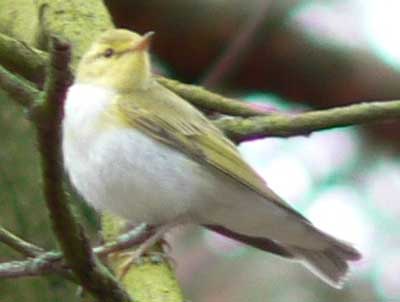Phylloscopus sibilatrix Cladus: Eukaryota
Phylloscopus sibilatrix (*)
Name Phylloscopus sibilatrix (Bechstein, 1793) Vernacular names
Der Naturforscher, Halle 27 p.47 ----------- The Wood Warbler Phylloscopus sibilatrix is a common and widespread leaf warbler which breeds throughout northern and temperate Europe, and just into the extreme west of Asia in the southern Ural Mountains. This "warbler" is strongly migratory and the entire population winters in tropical Africa. Habitat This is a bird of open but shady mature woodlands, such as beech and sessile oak, with some sparse ground cover for nesting. The nest is built near the ground in low shrub. Like most Old World warblers, this small passerine is insectivorous. Description The Wood Warbler is 11–12.5 cm long, and a typical leaf warbler in appearance, green above and white below with a lemon-yellow breast. It can be distinguished from similar species, like the Chiffchaff P. collybita and the Willow Warbler, P. trochilus by its yellow supercilium, throat and upper breast, pale tertial edges, longer primary projection, and by its shorter but broader tail. It is a summer visitor to the United Kingdom, seen from April until August. Songs It has two song types, often (but not always) given alternately; a high-pitched fluid metallic trill of increasing tempo pit-pit-pitpitpitpt-t-t-ttt lasting 2–3 seconds, and a series of 3 to 5 descending piping notes of lower pitch piüü-piüü-piüü. The contact call is a soft piping note, similar to the second song type, but shorter and given singly, "piü". References * BirdLife International (2004). Phylloscopus sibilatrix. 2006. IUCN Red List of Threatened Species. IUCN 2006. www.iucnredlist.org. Retrieved on 12 May 2006. Database entry includes justification for why this species is of least concern Source: Wikispecies, Wikipedia: All text is available under the terms of the GNU Free Documentation License |
|


